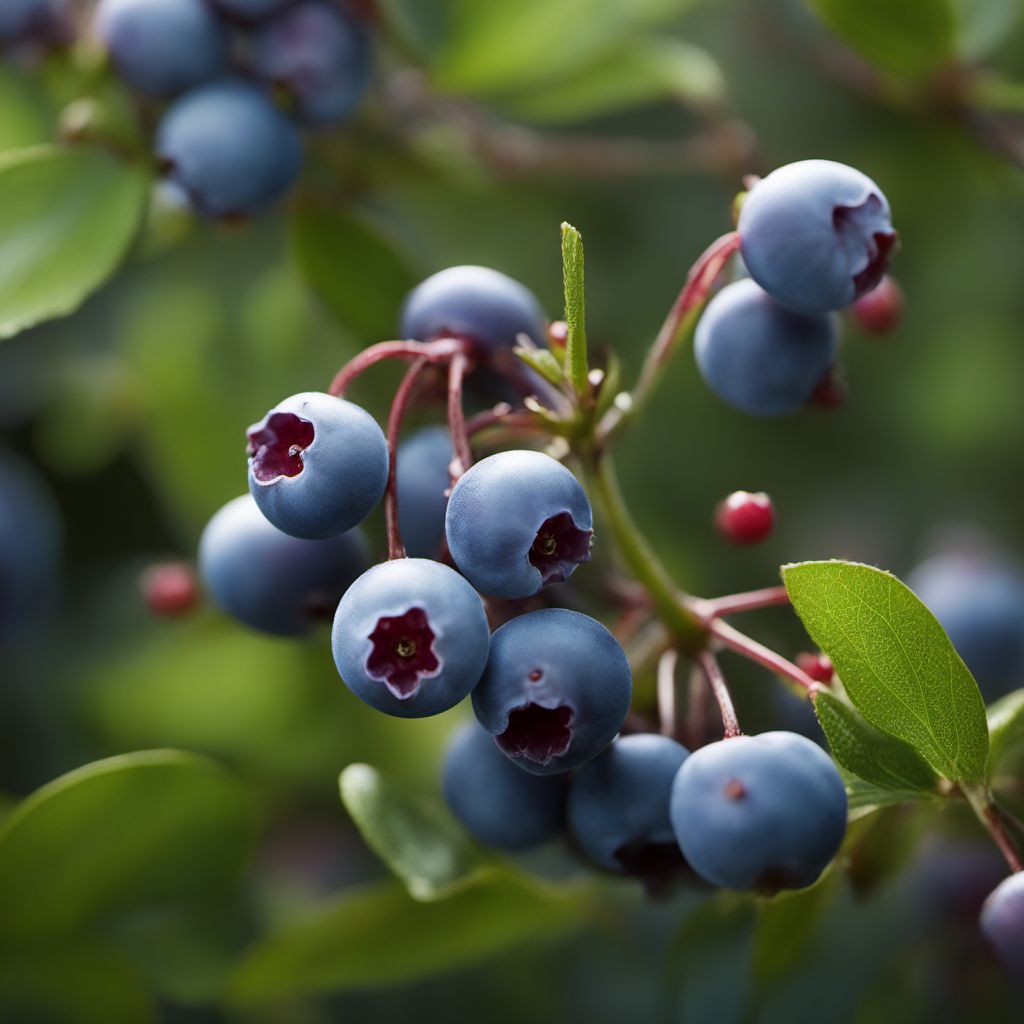
Ingredient
Bog bilberries
"The Wild Delicacy: Unveiling the Mystique of Bog Bilberries"
Bog bilberries are small, round berries that range in color from deep blue to black. They have a slightly tart taste with subtle sweetness, making them a delightful addition to both sweet and savory dishes. The berries have a soft, juicy texture and are often compared to blueberries, but with a more intense flavor. Their appearance is characterized by a dark, glossy skin and a delicate, translucent flesh.
Origins and history
Bog bilberries are native to the northern regions of Europe, Asia, and North America. They have a rich historical significance, as they have been used for centuries by indigenous cultures for their medicinal properties and as a food source. In Scandinavian folklore, bog bilberries were believed to have magical powers and were associated with good luck and protection against evil spirits.
Nutritional information
Bog bilberries are a nutritional powerhouse, packed with antioxidants, vitamins, and minerals. They are low in calories and high in fiber, making them a healthy choice for those watching their weight or looking to improve digestion.
Allergens
There are no known allergens associated with bog bilberries.
How to select
When selecting bog bilberries, look for plump, firm berries with a deep, vibrant color. Avoid berries that are soft, mushy, or have any signs of mold. Freshness can be determined by checking for a glossy skin and a sweet aroma.
Storage recommendations
To maintain the freshness and quality of bog bilberries, store them in a breathable container in the refrigerator. They can last for up to a week when stored properly. For longer-term storage, freeze the berries in airtight containers or use them to make preserves.
How to produce
Bog bilberries can be challenging to cultivate, as they thrive in specific wetland habitats. However, if you have access to a suitable environment, you can try growing them from seeds or young plants. Ensure the soil is acidic and well-drained, and provide ample moisture to mimic their natural habitat.
Preparation tips
Bog bilberries can be enjoyed fresh, added to smoothies, baked into pies and tarts, or used as a topping for desserts. They can also be cooked down into sauces or jams to enhance their flavor. To prevent the berries from bleeding their color, gently fold them into batters or mixtures rather than vigorously stirring.
Substitutions
If bog bilberries are not available, you can substitute them with regular blueberries, which have a similar taste and texture.
Culinary uses
Bog bilberries are commonly used in Scandinavian and Russian cuisines. They are often incorporated into desserts like pies, cakes, and pancakes. Additionally, they can be used in savory dishes such as sauces for game meats or added to salads for a burst of flavor.
Availability
Bog bilberries are commonly found in the northern regions of Europe, including Scandinavia and Russia. They are also found in certain parts of Asia and North America, particularly in wetland areas.
